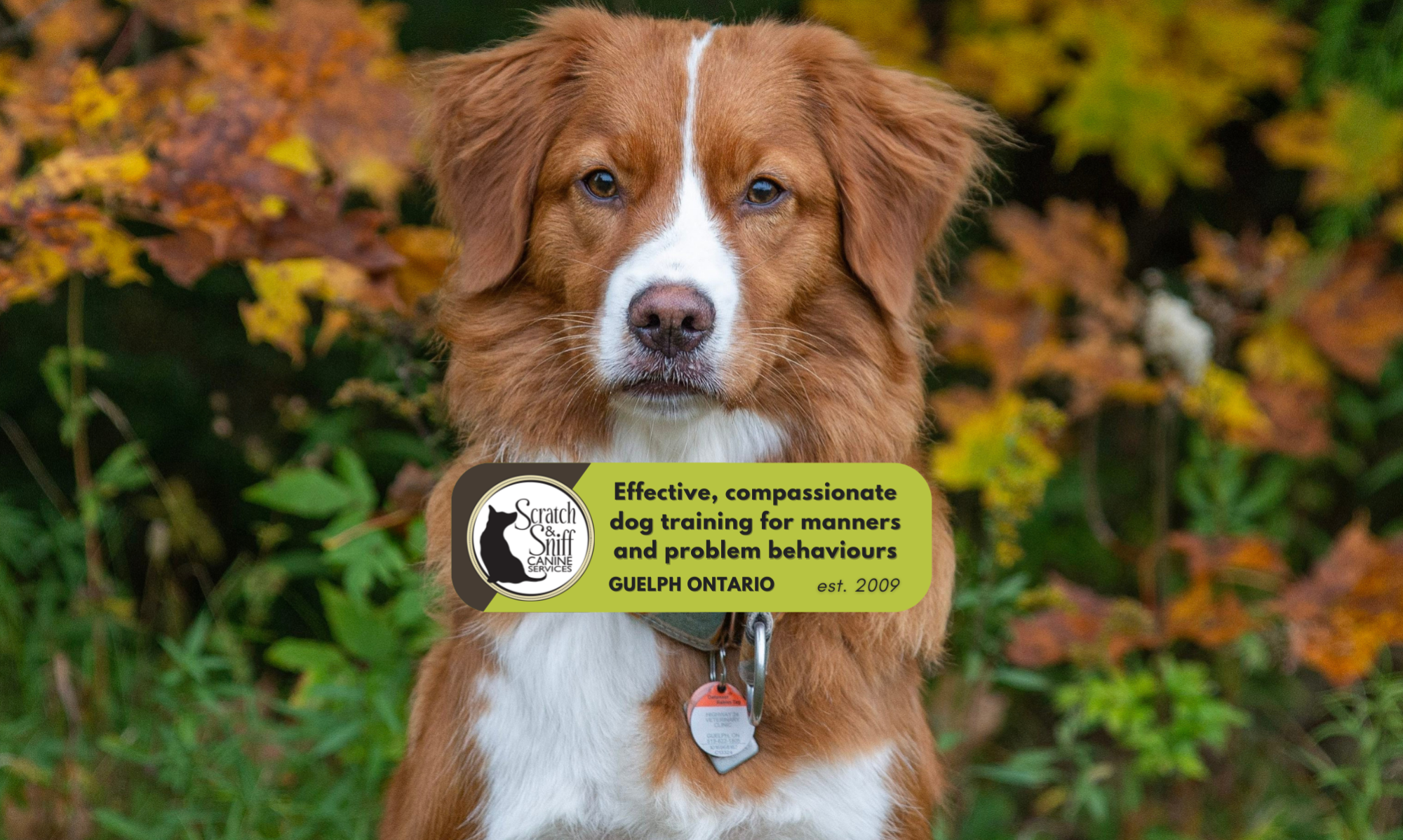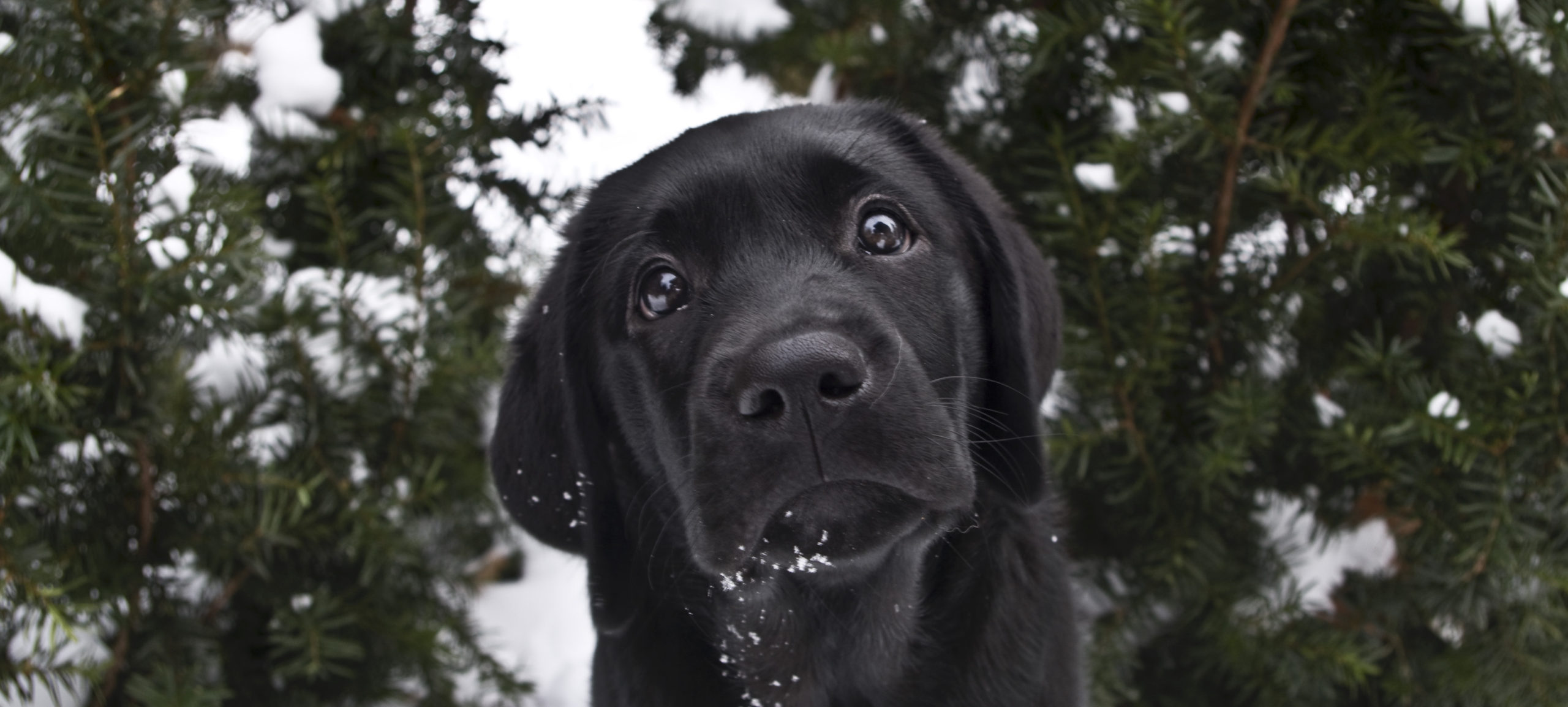Welcome to winter! The season of bundling up and staying in.
Taking on a winter puppy can be difficult. House-training is harder – who wants to squat in the snow? Socialization is harder because we humans are less than cold tolerant, and, of course, small-breed puppies quickly regret trips outside. Deep snow is also tough on shorter or more timid puppies, and the dreaded road salt affects all pups!
People, animals, and environments that a dog is not exposed to as a youngster will be unsettling for her as an adult. This is precisely why many adult dogs become reactive, aggressive, or fearful. Raising a puppy in a social/environmental vacuum is more often the cause of behavioural problems in an adult dog than is abuse or being attacked.
The critical window of socialization ends between 12 and 16 weeks of age, and it is important for your pup to have as many good and varied experiences as possible before that age. This socialization period cannot be “put on hold” – every day counts!
It’s impossible to over-emphasize how important it is to take advantage of these precious few weeks, when your puppy is most open to learning about the world.
Puppy Socialization Program
Your first stop can be a well-run puppy socialization program. Look for an age-specific class (under 5 months), where play is carefully monitored, socialization activities and not obedience is emphasized, and health and safety are a top priority. Begin this program a week after you bring your puppy home to see the most benefit.
However, classes are not the be-all and end-all of socialization. An hour a week is not adequate socialization! You will need to take the information you learn and apply it in daily life, finding new and novel locations and circumstances for your pup every day.
Outdoor Socialization
It’s very normal for puppies to have trouble walking away from their home. While cold may play into this during winter, it’s a common concern at all times of year. Put your pup in the car and drive to a new location every day for walks.
You might just find that it is not the cold that is slowing the walks! Focus on meandering at your puppy’s pace, stop for play breaks, let her play in the snow, and provide lots of treats when anything “weird” shows up – like a garbage can or a loud truck.
If your hands are too cold to handle treats, check out your local drug store or dollar store for silicone squeeze tubes – you can find them in the travel section. Stuff the tube with canned food or cream cheese, and there’s no need to remove your gloves when you reinforce your puppy.
Indoor Options
Sometimes it really is just too frigid to be outside, or maybe you have a small breed that is truly not able to hang out outside for longer than a few minutes. The good news is that there are lots of indoor options for you to take advantage of daily!
Check out hardware stores like Home Hardware, feed supply stores like TSC, libraries, local breweries, corner stores, Canadian Tire stores, and more. Many stores allow non-disruptive dogs with respectful owners inside – all you have to do is ask. Some even post signs indicating their dog friendly or mention it on their website.
This is a great opportunity for not only walking on frigid days, especially in the bigger stores with long aisles, but also for training with people passing by and for socialization in a unique environment filled with weird objects and funny smells.
Be sure to let your pup relieve herself outdoors before entering and bring some clean-up supplies, just in case! (Stores will stop allowing dogs in if they leave a mess or make extra work for employees.)
Warm Clothing
There are many options for doggy clothing! You can get the minimal coverage of a coat or the whole-body coverage of pyjamas. Rather than looking for something cute or stylish, focus on the comfort and safety of your pup. Find a coat that is easy to put on and doesn’t involve having to restrain or manipulate your puppy’s legs or face. Make this a good experience for your puppy by feeding her continuously as you’re dressing her and by handling her gently and respectfully.
If your puppy is worried, moving away, nipping, or thrashing, take this process very slowly in order to avoid creating a body-handling problem. That might mean being without a coat for a few weeks and taking advantage of indoor locations and milder days.
House-Training
It is tough to house-train pups in winter, that’s for sure. Luckily there are some additional steps you can take to help keep things on track:
- Always go outside with your puppy, no exceptions!
- If she’s too cold to go, bring her in to warm up for a few minutes and keep her beside you until the next trip out.
- Shovel a section of lawn and a path to the door.
- Construct a small shelter so your pup is protected from wind and precipitation. Carry your pup to this location if necessary.
- Purchase an indoor potty station, or make your own in a kiddy pool, and set this up in your living space or garage. This is preferable to pee pads since it doesn’t look like an area rug.
- Keep a coat by the back door for pee breaks.
If you choose to bring a puppy home in winter, it remains your responsibility to socialize her properly. There are no pause buttons on winter puppies just because there’s a month-long cold snap, a week of ice storms, or you just can’t stand going out in the cold and dark. Both you and your pup will pay for it if you hibernate for these precious few weeks instead of following through on a proper socialization plan.

